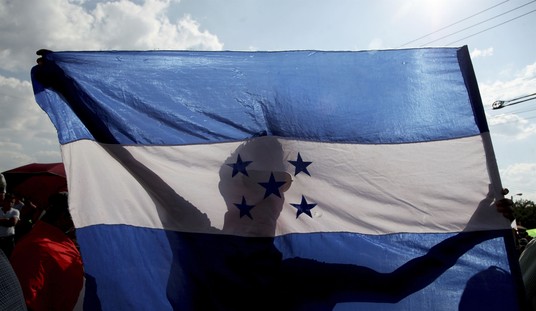In Iraq, ISIS threatens the Baghdad airport. Meanwhile, in the U.S, theatergoers get to watch people frantically scrambling to be on the last flight out of Vietnam.
Not everyone is eager to relive America’s last great foreign policy disaster—even cinematically. But Rory Kennedy’s new film, Last Days in Vietnam, offers a stunning history lesson as it depicts the anguish at the end of a badly waged war. The documentary revolves around the last chaotic days before the fall of Saigon, the capital of South Vietnam.
In 1973, under the Paris Peace Accords, the U.S. agreed to withdraw all its combat forces. In turn, North Vietnam agreed to “respect the independence” of South Vietnam.
Peace didn’t last long.
U.S. President Richard Nixon promised the South Vietnamese government he would rush in support if conflict resumed. But, with Nixon’s resignation in the wake of the Watergate scandal, North Vietnam decided to test Washington’s resolve, launching a major incursion into the central highlands. When Congress refused to support additional aid, the invasion expanded rapidly south. By May 1975, enemy troops closed in on the capital.
Wanting to show a brave face of support for the South Vietnamese, Graham Martin, the American ambassador in Saigon, pushed off evacuation planning until the last minute. Even then, the official policy was to remove only U.S. citizens, leaving behind many thousands of Vietnamese officials and their families who worked closely with the Americans.
Kennedy’s film tells the story of when the end came. At first, U.S. military and embassy officials smuggled out friends and their families through the U.S. air base at Tan Son Nhut on the outskirts of Saigon. When enemy shelling shuts down the airstrip, the story shifts to three desperate efforts. At the embassy compound, Martin refuses to leave—letting rescue helicopters shuttle hundreds of Vietnamese to U.S. ships waiting off the coast. At the same time, small groups of refugees frantically try to make their way out to the American fleet. Meanwhile, other U.S. ships escort a makeshift fleet of South Vietnamese ships from Saigon to the Philippines.
Kennedy weaves these stories together into one gripping film. Her movie-making proves that a well-crafted documentary can be every bit as enthralling as a CGI-Hollywood blockbuster. It should not be missed.
But Last Days in Vietnam is more than a compelling story well told. It is also a cautionary tale for our times.
After the withdrawal of U.S. forces in 1973, opponents of the Vietnam War had become so invested in its failure, they refused to endorse any other outcome. That stubbornness contributed to the tragedy portrayed in film.
In his history of the final phase of the Vietnam conflict, A Better War, Lewis Sorley makes the case that—despite the many missteps and setbacks—“Vietnamization” worked. The U.S. left a country that could stand, if it was adequately supported through the period of post-conflict transition. The U.S. had provided that support in South Korea, Japan and Germany. But in Vietnam, Washington cut and ran. Failure then became a self-fulfilling prediction.
Historical parallels are never perfect. Still, the American drawdown in Iraq bears an eerie resemblance to the exit from Vietnam. And if Baghdad falls to ISIS, the ensuing chaos and tragedy will be strongly reminiscent of Saigon’s last awful days as well.
Of course, the last days in Saigon were not the end of the story. It got worse. Once Saigon fell to the North Vietnamese, thousands of South Vietnamese were executed. Many more were sent to prisons and the “camps.” Violence spiraled throughout the region to Laos and the killing fields of Cambodia. Vietnam fought another war with China. There were years of death and misery ahead.
Nor did the U.S. escape the aftermath of the fall. The Soviet Union had actively sponsored and supported North Vietnam throughout the war. When the South collapsed, the Kremlin took the American humiliation as a sign that the West was on the ropes. Moscow then bankrolled waves of insurgencies in Latin America and Africa. The Soviet Union became the world’s number-one state sponsor of terrorism in the Middle East and underwrote anti-American movements in Western Europe. The Soviet Union also expanded its stock of nuclear, chemical and biological weapons many times over. The world became a much more dangerous place for America once Washington was tagged as a war-weary loser.
No matter how prudent the contingency planning to minimize the horror show that would follow Baghdad’s fall, if ISIS drives across to victory the scenes won’t be any prettier than those in Last Days in Vietnam.
The best way to avoid a replay of the debacle in Saigon and its aftermath is to not let Baghdad fall in the first place.
Regardless of how America got to where it did in Iraq, no American should be content to watch our achievements there be wiped away. The goal should be to help Iraq win a future–not to compile stock footage for another film about failure.











Join the conversation as a VIP Member